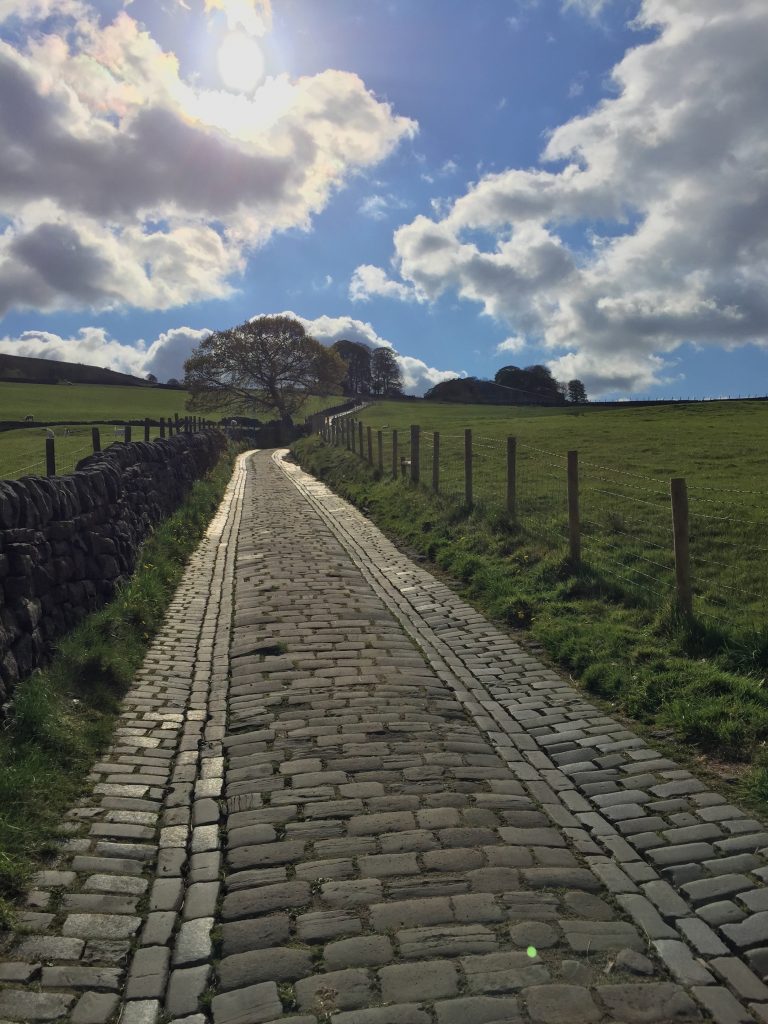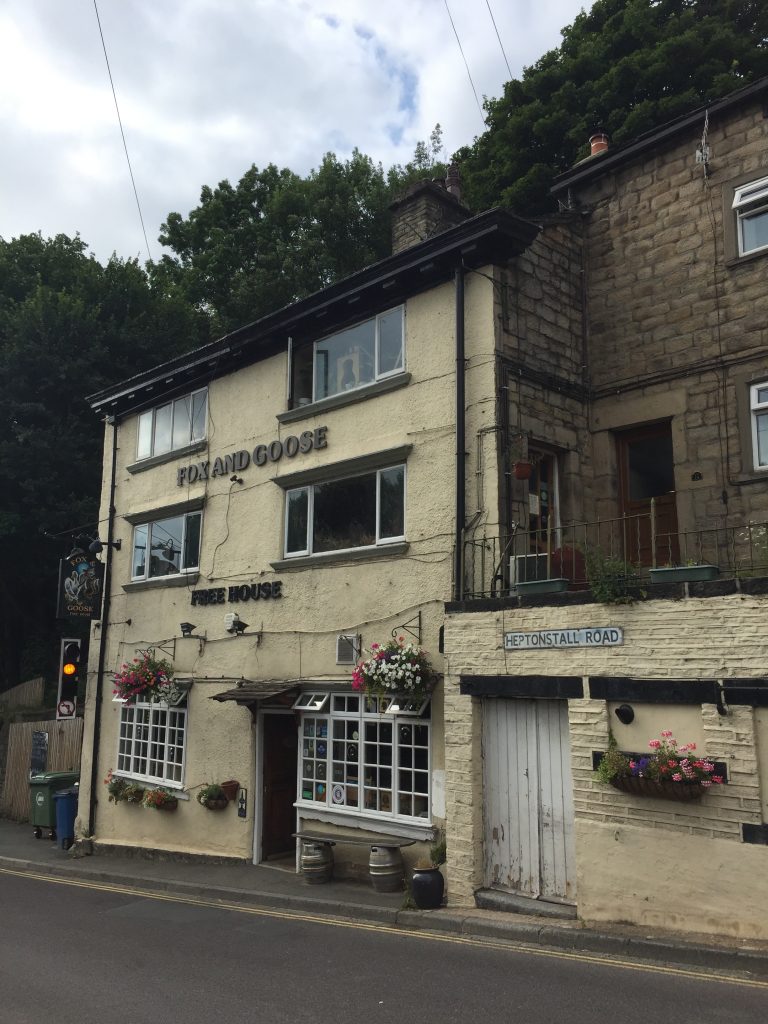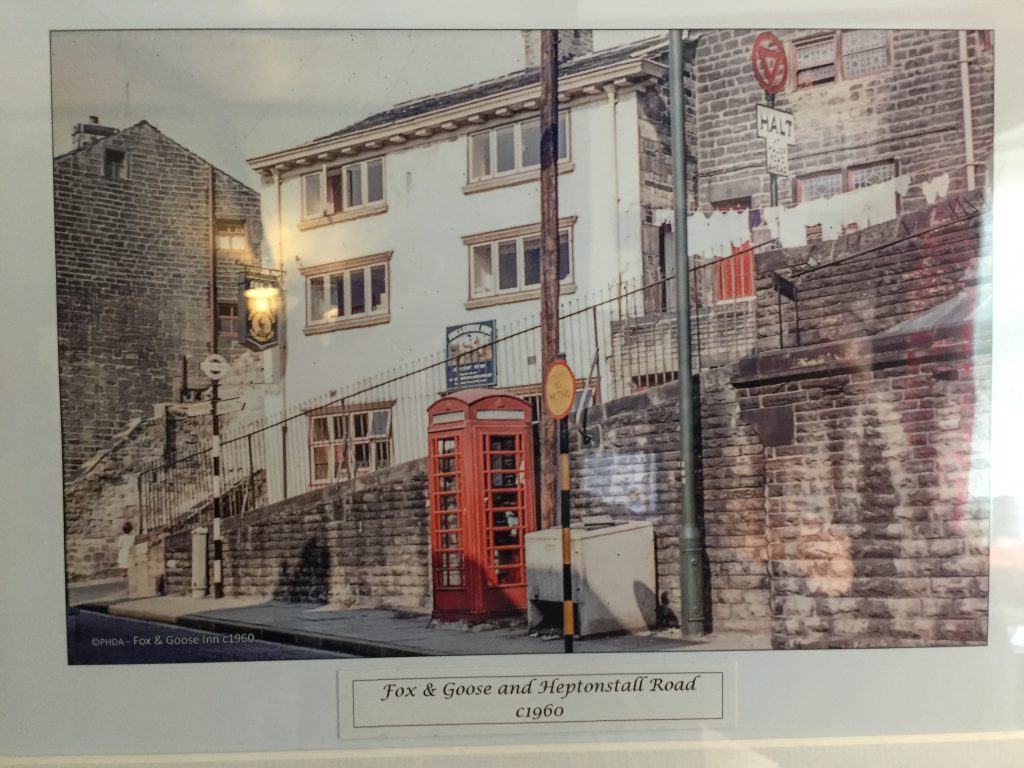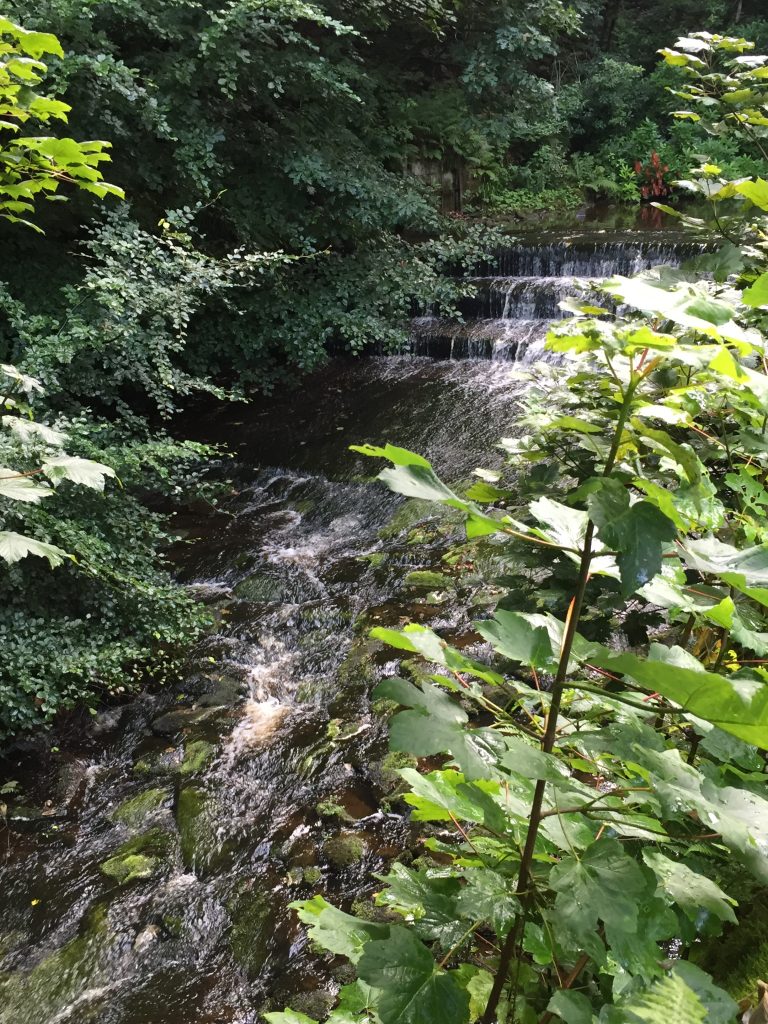
So two of Joshua Gibson’s sons had taken their own lives. But what was happening to Joshua Gibson’s daughters? Out of his nine children three were girls. Mary married a railway contractor, Ezra Butterworth who ultimately came to his own sticky end. Hannah and Sarah Ann both married innkeepers, thereby keeping up the family business. On 2nd April 1854 Sarah Ann Gibson, then aged 20 married the 24 year old Paul Taylor at St John’s, Halifax, and it’s through her that I am connected to the Taylor family. Over the course of the next 16 years Paul and Sarah Ann had ten children. Until his marriage Paul had lived in the tiny community of Old Chamber, high above the Calder Valley, one of seven children born to Mary and John Taylor, a farmer and sometime slater.

There Paul had made his living as a plasterer. At some point, probably when he married Sarah Ann they moved down into the valley and settled in Hebden Bridge for in 1861 they are running a beerhouse on Bridge Lanes just steps away from The Bull Inn where Sarah Ann’s father, Richard, had been the landlord. The tightly packed community known as Bridge Lanes was a conglomeration of houses, literally on top of each other, connected by steep stone steps which today show the imprints of a hundred years of clog clad feet.

The earliest reference to a named pub that the Taylors were operating was in 1857 when they were keeping The Fox and Goose. Oh my! In February 2020 when the flood waters from Storm Ciara prevented me from returning home after playing the organ for a Sunday morning service at Heptonstall church I sought refuge in The Fox and Goose, primarily because its location is slightly elevated from the centre of town and was therefore above water! Along with other refuge seekers I was provided with warm food and as much tea as I could cope with. I was so grateful. What a surprise to find that my ancestors had operated the same pub 145 years before. I hope they were as kind and inviting to their customers as today’s landlord is.

I recalled an incident, however, when landlord Paul may have been a little too welcoming. In 1875 Paul was charged with permitting drunkenness on his premises between 10 and 11 pm. When two bobbies entered the premises they found Paul Taylor in the taproom, along with James Clayton, the blacksmith, with a mug of beer in front of him and ‘another man in who was fresh.’ Paul was fined 20s. In the same year it appears that the same two bobbies were again on Paul’s trail. This time Paul and another man were spotted by the two plain clothed bobbies playing cards ‘on the Lord’s day’ at Rawtenstall wood, the very steep hill that rises directly above the pub, – and gambling. Greenwood was captured on the spot but Taylor ran off but took his cap off and looked back.

One bobby, recognizing him shouted “That’s Paul Taylor, the landlord.” Greenwood was taken to the lock up. Taylor denied being there and called others as witnesses who supported his claim and his case was adjourned. I’ll never be able to wander around that wood just above Bridge Lanes again without looking out for those plain clothed bobbies! But Paul was not the only landlord in the family that enjoyed a tipple. Two of Paul’s brothers, Henry and John took it in turns to be landlords of the Stubbing Wharf pub over a span of 25 years. In 1876 John was fined 10s for being drunk in his own beerhouse and Henry ran the inn until his death in 1892. It’s now a picturesque establishment on the Rochdale canal, my ‘go to’ pub when I have guests visiting from out of town, but until recently I never knew of my family’s connection to the place.

As I browsed through old newspapers online for references to the Fox and Goose I found that in 1878 Paul had been required to undertake the drainage and completion of closets to his houses at Newgate End as per plans submitted to the board. But four years later it was reported in the Todmorden Advertiser that ‘ there is a continual nuisance in and about the privy belonging to Paul Taylor, Newgate End which is caused by the defective drains of the 2 cottages belonging to Thomas Sutcliffe.’ Eight years later Paul and his sanitary problems were still making the newspaper columns when, in 1890, the building and nuisance committee reported a nuisance arising from a defective urinal.
But another newspaper article about Paul Taylor stopped me in my tracks. Paul and Sarah Ann’s six year old son, Frank, drowned on his way home from school – St James’s, Mytholm. It was the depths of winter, February 1880. At the end of the school day the children were dismissed at 4:10. It would have been totally dark by that time but there was a lit gaslight close by. Frank clambered over the wall opposite the school and climbed down to the river where the school children were known to like to slide on the frozen dam. Below the dam, was the ‘panhole’ – a hole four feet deep, with no fencing around it, just below a small waterfall.

Frank balanced on some ice on the frozen Colden Beck and reached into the panhole to gather some ice. Someone on the bridge saw him fall into the panhole and Richard Mellor, the schoolmaster was summoned and was quickly on the scene. Mellor could just see the top of Frank’s head peeking above the hole. He managed to retrieve Frank but his attempts to resuscitate him failed. Frank’s body was taken to his home at the Fox and Goose, just five minutes walk from the school. His dad was out feeding the pigs at the time and within minutes a doctor was called for, but his efforts too were in vain. The shock for his parents and five siblings is unfathomable. They had already lost one son, Gibson, who had died a few months short of his second birthday. At the inquest into Frank’s death held at the Bull Inn, Frank’s mother’s former home, the schoolmaster commented that “If P.C. Eastwood would visit the school and give a warning to the scholars it would no doubt frighten them for a time.” The school lies just a few hundred yards up Church Lane and I crossed over the Colden River on Bankfoot bridge where, in the Taylor family’s day stood Bankfoot Mill. St James’s church where I sometimes play the organ for services was to my right and directly behind it is the school that Frank attended. The school was established in 1870 and funded by public subscription- “ … a school shall be established for the education of children and adults or children only of the labouring, manufacturing, and other poorer crafts of the ecclesiastical district of Hebden Bridge…” Originally it was a single storey building and all the children were taught together. However, in 1880, the year of the tragedy, it was decided to separate the ‘Mixed’ from the ‘Infants’ with Richard Mellor head of the mixed and Mrs Mellor head of the infants. In 1888 a second storey was added for the needs of the growing population and I’m proud to say that my Wrigley ancestors were employed to carry out the painting of the extension. A further coincidence was that Paul Taylor’s daughter, Mary, married schoolmaster Mellor’s son at St James’s church and as a witness to their wedding Richard Mellors’s signature is on their marriage certificate.
From the Fox and Goose I headed to St James’s school and the scene of Frank’s death. I passed the former site of Bankfoot Mill, a spinning and weaving mill that would have been a hive of activity at the time but which was demolished in 1971. The school lies directly behind St James’s church. The site for both had been donated by James Armitage Rhodes of Mytholm Hall. He had reserved a piece of triangular land behind the church. “I reserved it for a School: but I subsequently thought that it was too dark – as light is essential to the well conducting a School.” A low stone wall, barely two feet surrounds the perimeter of the school today and directly below the ground drops vertically to the river. I could make out a weir, which is probably ‘the waterfall’ referred to in the inquest into Frank’s death as I stood on the bridge, probably standing in the very spot from where the schoolmaster could see Frank’s head peeking above the hole. As I headed back towards the church I paused for a moment to pay my respects to Frank at the cemetery which borders the stream. From his resting place I could hear the bubbling brook as it wound its way to join the River Calder. A chill passed through my body despite the warmth of the afternoon and I retraced my steps to the Fox and Goose, pausing to partake of some much needed refreshment in the beer garden situated in the ruins of the cottages adjoining the inn.

Leave a Reply